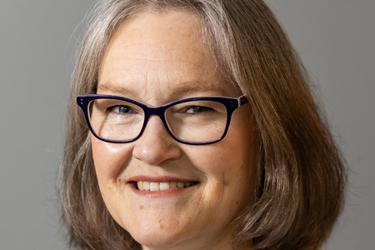How AI Is Helping Drug Developers Help Rare Disease Patients
By Helen Thackray, MD, Chief Research & Development Officer, BioCryst

It’s fair to say that 2023 was a breakout year for widespread discussion about artificial intelligence (AI) and what it could mean for many aspects of our daily life, work, and humanity at large. Ongoing dialogue around this transformative technology is necessary, and proceeding thoughtfully is essential, especially for the biopharmaceutical industry. One discussion I’d like to see more of in 2024 is how companies can move beyond AI as a “buzzword” and optimize its use to truly realize its potential.
As a rare disease researcher, I am intrigued by how AI is already advancing progress for the biotech industry. And as a physician, I’m especially excited about how leveraging AI and machine learning (ML) in clinical trials could expedite the development of new, more personalized therapies for patients. In fact, the FDA recently noted that submissions across drug and biological product applications that include AI and ML have increased to more than 100 submissions in 2021, a number that is poised to skyrocket. In particular, this technology could revolutionize drug development for rare diseases, since more than 90% of rare conditions lack FDA-approved treatments.
It’s clear to me that we’re now in an era where integrating AI into R&D is essential. Harnessing the full potential of this technology will take thoughtful implementation – and no doubt pose some challenges – but I believe AI will eventually have a tremendously positive impact on our ability to help patients and address unmet needs.
Importantly, tools like AI and ML are just that – tools. They are only half of the equation; the other half is empowering the people who use, guide and train others to ultimately make sense of the tools’ outputs and determine how best to leverage them. My team is already integrating AI into its drug discovery process as we continue our mission to deliver therapies to patients living with complement-mediated and other rare diseases. Some examples include:
- Drug design: AI and predictive models are excellent tools that can give us an advanced starting point in drug design, which provides us with the initial data we need: three-dimensional structures of specific proteins as formed from sequences of amino acids. While there are many things these models can’t do, this solves the first challenge in drug design, which is understanding the basic protein structure. This has been hugely helpful to the structure-guided drug design approach we apply in our R&D efforts. Programs such as AlphaFold have enabled us to evaluate drug targets faster than older, more labor-intensive methods that we previously used over the course of our nearly four decades in drug development.
- Supplementing rare disease data: An ongoing challenge in rare disease R&D is the limited availability of information and finding appropriate patients to run a clinical study, given the small size of patient populations living with these diseases. We are using AI to help us create synthetic data sets that can fill gaps by identifying patterns in sparse data that are typically inherent to the rare disease community. These datasets have additional benefits, such as eliminating the risk of potential inadvertent identification of trial participants. When applied in this capacity, AI also can help us extend what can be concluded from smaller datasets or those with gaps, such as extrapolating pharmacokinetic/pharmacodynamic modeling from an adult dataset to inform and raise confidence in the safety and efficacy of a drug in pediatric patients. Optimizing clinical trials can lead to quicker access for patients to new treatments in development.
- Maximizing value from real-world insights: We leverage AI to make sense of data we collect from real-world settings. For example, we aggregate and analyze real-world data, including conversations with patients, data that detail their experiences on our therapies, and other sources, to better understand the needs of patients with rare diseases. While these deidentified findings are immensely insightful on their own, we leverage AI to maximize their value by connecting dots that otherwise would be challenging to digest. In turn, these insights help inform decisions we make, which ultimately can improve the care patients receive.
While the incredible utility of AI in drug development is certainly not new to many in the field, I believe it is important that we as an industry continue to openly discuss, recognize and share the ways in which AI can advance our work to support the rare disease community. In reflecting on my role as a researcher and my experience as a physician, I hope we also will look for opportunities to collaborate as peers, when able, to maximize the positive impact of AI in the service of patients.
About The Author:
Dr. Helen Thackray, MD, is the Chief Research and Development Officer for BioCryst. Prior to joining the company, she was the Chief Medical Officer and Senior Vice President of Clinical Development at GlycoMimetics, Inc., where she led their orphan product, fast-track, and breakthrough therapy programs in rare diseases and oncology. Previous experience includes a senior role in clinical development at Biosynexus, and over a decade on the Research Ethics Review Board of the National Center for Healthcare Statistics, part of the Centers for Disease Control and Prevention. She is a board-certified pediatrician, serving on the faculty of the Children’s National Medical Center and George Washington University School of Medicine and Health Sciences from 2000 to present. Dr. Thackray holds a B.S. in Biological Sciences from Stanford University, an M.D. from the George Washington University School of Medicine and Health Sciences, and has authored more than 60 peer-reviewed articles and presentations. She completed her pediatric residency and chief residency at Children’s National Medical Center, trained in medical genetics at the National Human Genome Research Institute at the National Institutes of Health, and is a fellow of the American Academy of Pediatrics.
